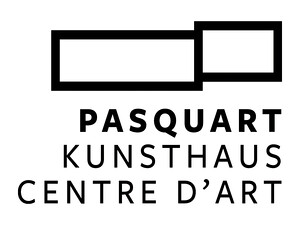Shiftings
April 10–June 12, 2022
Seevorstadt 71
2502 Biel/Bienne
Switzerland
Hours: Wednesday–Friday 12am–6pm,
Thursday 12am–8pm,
Saturday–Sunday 11am–6pm
T +41 32 322 55 86
info@kbcb.ch
Caroline Achaintre (b. 1969, France/Germany) works with different media such as tapestry, drawing and ceramics, which she combines in a conceptual as well as process-based way. She transposes traditional techniques into the present, exploring the boundaries between the abstract and the representational. Her ceramics and watercolours, as well as the large-format tapestries, allow animalistic-looking figures and mask-like formations to appear and create a playful and absurd atmosphere. Caroline Achaintre’s first solo museum exhibition in Switzerland provides an insight into the memorable work of the German-French artist. It offers a glimpse of an artistic oeuvre that is characterised by precision, a pleasure in experimentation and unconventionality.
The exhibition title Shiftings alludes not only to the fact that Achaintre transfers traditional techniques such as tapestry or ceramics into the present, but also to her constant testing of the boundaries between abstraction and the figurative. Geometric, mask-like formations and wondrous, seemingly animalistic figures appear in her works, questioning our preconceived view and shifting classical classifications. The magic of Achaintre’s hybrid creatures is hidden in their ambiguity, their beauty lies in their irritation.
Achaintre develops her powerful tapestries with the technique of tufting, in which individual wool threads are shot through the canvas from behind with the help of a pressure gun. Due to the varying length of the threads and their elasticity, the soft fibres mix and form a relief-like surface on which lines and colours flow into each other. Form, line and material combine to create a pictorial experience in which the recognisability and blurriness of the contours are in an effective field of tension and give free rein to associations. Both the colour and the material captivate with their independence and have an effect in their very own substance. The works seem like mysterious relics of an unknown culture and unfold both a strong physical and sensual presence. Achaintre’s ceramics evoke associations with cell tissue, animal skins and masks, but also with human faces. Her intimate works on paper, on the other hand, are reminiscent of conundrums or the depth-psychological procedure of the Rorschach test. In many cases, various characters and multiple identities seem to populate her works.
Achaintre’s sources of inspiration are images from both high and popular culture. In addition to art-historical reference points, including German Expressionism, Primitivism and the Arts and Crafts movement, the horror, heavy metal and science fiction genres are just as important to her as the subversive spirit of Central European carnival and Shrovetide customs. The lively, colourful and humorous characterise Achaintre’s work as much as the archaic, dark and mysterious. On the border of the “uncanny” (Sigmund Freud), the strange can be discovered in the supposedly familiar; a tapestry becomes an animistic figure or wool becomes hair. Are they abstract forms or anthropomorphic beings? Are they patterns, rectangles and circles or pieces of clothing, fur, feathers, mouths and eyes? And finally: are we observing or being observed?
The exhibition is a cooperation with the Kunstmuseum Ravensburg, Germany.
Curators of the exhibition
Stefanie Gschwend, director ad interim Kunsthaus Pasquart and Felicity Lunn
Publication
In cooperation with Kunstmuseum Ravensburg a publication with texts by Oriane Durand, Kristina Groß, Stefanie Gschwend / Ute Stuffer, Vanessa Joan Müller and exhibition views will be published by Verlag für moderne Kunst (ENG / FR / GER).
Press inquiries: pr [at] pasquart.ch


